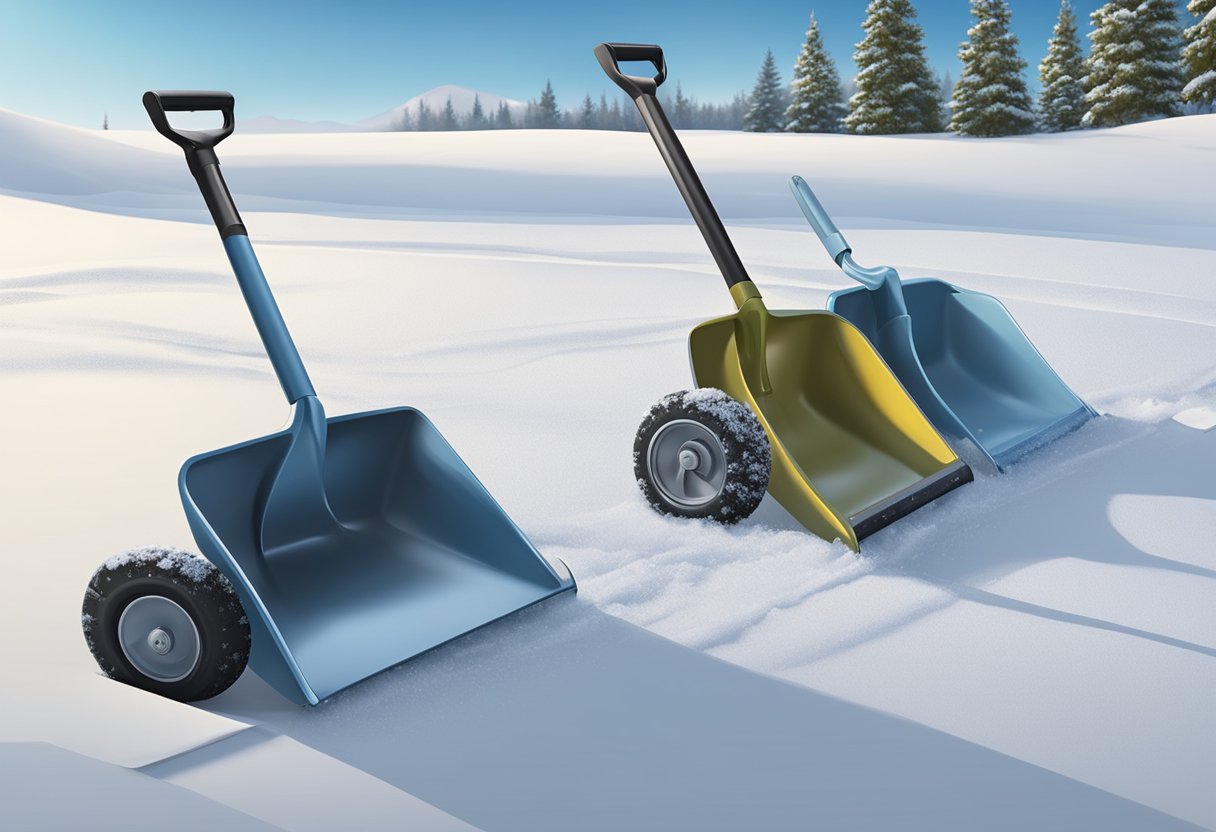How many calories shoveling burns is based on a number of factors which we will be discussing in this article. However, the average individual will burn 200 to 450 calories shoveling lightly for 1 hour, while they would burn 450 to 700 calories in an hour when shoveling vigorously.
Shoveling isn’t usually listed as a go-to exercise when looking to lose weight or build muscle; however, maybe it will be on your list soon. We can all agree that is not a fancy sport. If you are out with your friends and talk about the day you had, it will sound interesting to say that you went to a kickboxing class.
Proudly talking about the insane workout you had while shoveling will probably get you a good laugh or a few raised eyebrows, depending on the type of company you like to keep. Nevertheless, shoveling is a genuinely great exercise if you take a few precautions, which we will discuss quickly.
The best thing about using a shovel to burn calories is that you get stuff done. You won’t spend an hour in a gym and save money. Instead, you will spend time working and making money since you do not pay someone to do it for you while burning calories.
Table of Contents
Why is shoveling a great exercise?
There are two aspects involved in a good exercise routine.
- The involvement of as many muscles as possible
- The activity is enjoyable without creating stress.
Many exercise routines place pressure on the person who is exercising. You need to pay attention, follow specific steps, and need to keep to the rhythm. Did you ever go to the gym for a spinning class and found that you cannot keep up with the instructor when everyone else was doing everything perfectly? Did this make you feel bad about yourself?
Shoveling doesn’t do that because the motion is simple, but it keeps you engaged because you are mindful of your surroundings and need to ensure you will not spill the load. Furthermore, shoveling involves your arms, quads, shoulders, entire abdomen, legs, back, and muscles in the neck. Most large muscles are involved when shoveling, and this means that it can be a complete body workout.
Want to know more about how and what muscles are engaged in shoveling? Check out: What Muscles Does Shoveling Utilize
Precautions to take when shoveling
Many people get injuries from shoveling because people don’t see shoveling and digging the same way they would see any other exercise, such as weight lifting. With weight lifting, you would warm-up and even have a spotter with you.
Shoveling??? no problem, jump in and get it done–this is the wrong approach. Just like with any other sport, the warm-up is crucial. You probably have not seen too many people doing jumping jacks on their driveway before shoveling the snow away. However, if you are going to shovel, make sure to warm up.
A few other essential tips would be to pay special attention to the areas where most strains from shoveling appear: the shoulders, neck, and lower back. Don’t lift with your back and bend at your hips and knees instead of your back. Your legs and your pelvis should move in a fluid motion.
When throwing the load, use your entire body instead of twisting your lower back and exposing it to injuries. For a detailed review on how to shovel, read our article: How to Shovel Without Hurting Your Back. Maybe the tips in this article will help you warm up before exercising in the gym!
Calculation of the Calories Burned When Shoveling?
The only 100% accurate way to determine the calories burned is in a laboratory. However, we can get a bit more scientific to help you calculate calories burned outside the lab.
The Adult Compendium of Physical Activities was created to study and research calories burned from various day-to-day tasks, such as shoveling. This Compendium utilizes a scale called the MET, Metabolic Equivalent, which measures the ratio between the metabolic work rate and the resting metabolic rate.
According to the Compendium of Physical Activities https://sites.google.com/site/compendiumofphysicalactivities/home, one metabolic equivalent of task or MET is defined as “1 kcal/kg/hour and is roughly equivalent to the energy cost of sitting quietly.
A MET also is defined as oxygen uptake in ml/kg/min with one MET equal to the oxygen cost of sitting quietly, equivalent to 3.5 ml/kg/min. To put the MET into perspective lets take a look at shoveling that requires a light effort vs. a vigorous effort:
Formula to Determine Calories Burned
These MET value is then multiplied with your weight and the duration of activity to give you the calories burned.
Here is an example:
John weighs 81.64 kg. (180lbs), it has snowed lightly, and it has taken him 30 minutes (.5 hrs.) of shoveling to clear his property.
FORMULA — Total Calories Burned=(Duration in hrs.)x(MET# x weight in kg.)
Entering Johns information from the example we get:
Total Calories Burned= (.5) x (5.3 x 81.64)
Total Calories Burned= (.5) x (432.69)
Total Calories Burned= 216.35
So, John burned a few calories while shoveling.
Other Factors that Determine Calories Burned
The number of calories burned while shoveling will also vary due to other factors:
1. The age, weight, and height of the person shoveling.
Muscular individuals will burn more calories than a person that has higher body fat.
A taller person expends more energy lifting.
An older person requires a more extended time to get to the right intensity to burn calories.
2. The season, weather conditions, and amount of clothes a person is wearing.
Is it intensely cold or warm out? If yes, then you will burn more calories.
Shoveling snow might seem easy because snow isn’t heavy.
However, it burns many calories because of other conditions: clothing, weather, and temperature.
When someone shovels snow, they are doing it in cold weather.
Staying outside in cold weather burns more calories because the body will utilize more energy to keep your core warm.
Maintaining your balance in icy conditions forces the muscles and your core to work harder, therefore burning more calories.
3. Fitness level
A person who exercises daily will burn fewer calories as their bodies are no stranger to exercise.
People who breathe heavier during exercise tend to burn more calories as their bodies work vigorously, burning more calories.
4. The intensity with which they are shoveling, lightly vs. vigorously, speed vs. weight.
No matter the type of load you are shoveling, calculating the number of calories you will burn will require you to think about the speed you are shoveling at and the weight of the load.
5. The weight of the shovel and load
Each load type will have its difficulties, and some will burn more calories than others.
Is the shovel you are using plastic or metal? The heavier the shovel, the more calories you will expend.
Take sand, for example. It seems like a straightforward job, but sand tends to slip from the shovel.
For this reason, the person shoveling sand will have to move with extra care and pay constant attention to what they are doing.
You probably already guessed that this will put additional strain on the body and add up the burned calories.
Given all of the above formulas, calculations and circumstances, statistically speaking, the average number of calories burned per hour while shoveling is between 400 and 700.
No matter why you have to shovel, make the best of it, and work up a sweat.
It is an excellent form of exercise, and it will also give you that internal satisfaction of a job well done and created with your hands.






